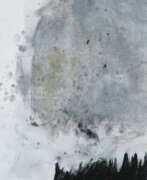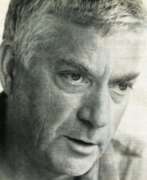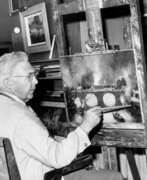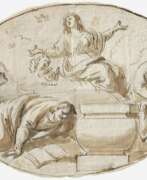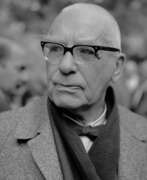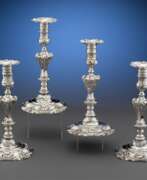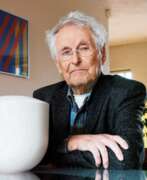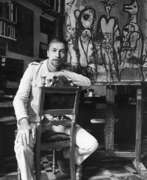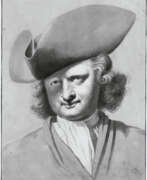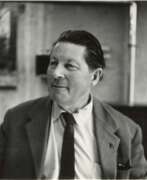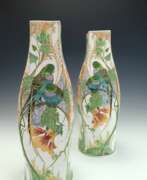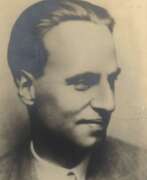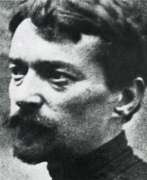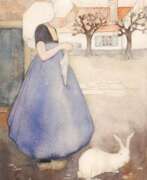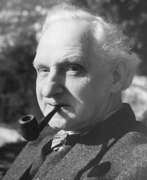Designers The Netherlands
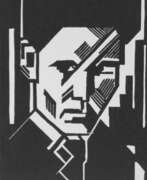

Wobbe Alkema is a Dutch artist, graphic artist, architect, designer and sculptor. He is known for his abstract and geometric works, often combining elements of constructivism and De Stijl.
Alkema was trained as an architect and then turned to art, studying at the Academy of Fine Arts in Groningen. In the 1920s he was involved with the artist collective De Ploeg, which was active in the northern Netherlands and promoted modernist art and culture.
Throughout his career, Alkema continued to explore the principles of abstraction and geometry in his work. His paintings often feature simple geometric shapes such as squares, circles and triangles arranged in complex compositions that suggest movement and depth. He was also interested in the interaction of colour, using bright, bold hues to create dynamic contrasts and harmony.
In addition to painting, Alkema created a number of sculptural works, including abstract reliefs and freestanding sculptures. He also designed furniture and other functional objects, applying his principles of abstraction and geometric form to everyday objects.
Alkema's work is held in the collections of several museums in the Netherlands, including the Groninger Museum and the Amsterdam Stedelijk Museum. He is considered an important figure in the development of abstract art in the Netherlands, and his work continues to be admired for its innovative use of form and colour.
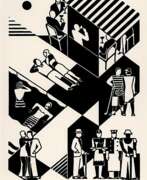

Gerd Arntz was a 20th-century German artist known for his skillful woodcut prints. A member of the Cologne Progressives—a group concerned not just with social and political issues, but also with the public’s ability to understand these concepts—Arntz sought to use his art as a method of delivering crucial information to the masses. Over the course of his life, he designed approximately 4,000 pictograms known as ISOTYPEs, or International System of Typographic Picture Education, a unique form of symbolized data from industries, politics, and economic phenomena intended for use by those who could not read.
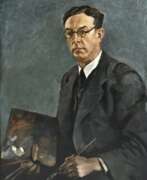

Paul Dom, born Paulus Ludovicus Carolus Dom, was a Belgian and Dutch painter and illustrator.
He studied at the Royal Academy of Fine Arts in Antwerp, lived in Belgium and the Netherlands, was granted Dutch citizenship in 1936 and lived in The Hague for the rest of his life.
Paul Dom was a versatile artist. He dabbled in drawing and painting and painted portraits, cityscapes and sketches, and genre scenes. At the same time he was a political cartoonist and illustrated books. Between 1917 and 1956 Dom illustrated hundreds of books, mostly for children.
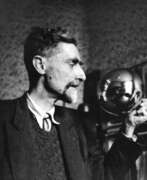

Maurits Cornelis Escher, a Dutch artist renowned for his mind-bending works that blend mathematics with visual art, has left an indelible mark on both culture and the art world. Born in 1898 in the Netherlands, Escher specialized in graphic arts, creating lithographs, woodcuts, and mezzotints that are celebrated for their inventive exploration of perspective, space, and the infinite. His ability to distort reality and challenge perceptual norms has made his works timeless, appealing to a broad audience beyond traditional art collectors and experts.
Escher's art is distinguished by its unique blend of mathematical precision and artistic imagination, making him a figure of fascination not only among artists and collectors but also mathematicians and scientists. His famous pieces, like "Relativity," "Waterfall," and "Drawing Hands," exemplify his skill in creating impossible constructions and exploring the concept of infinity through tessellation and symmetry. These works are housed in prestigious museums around the world, including the Escher Museum in The Hague, Netherlands, which is dedicated to his life and works.
For collectors and experts in art and antiques, Escher's creations offer a window into the seamless integration of science and art. His legacy continues to influence contemporary art, graphic design, and architecture, making his pieces highly sought after in the art market. The enduring appeal of Escher's work lies in its ability to engage the mind and challenge viewers' perceptions of reality, making him a pivotal figure in the world of art and culture.
To stay informed about new product sales and auction events related to Maurits Cornelis Escher, we invite you to sign up for updates. This subscription is designed specifically for enthusiasts and collectors eager to explore the fascinating intersections of art, mathematics, and perception that Escher's work represents.
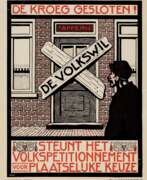

Albert Pieter Hahn was a Dutch political cartoonist, poster artist and book cover designer; well known for his socialist and antimilitaristic viewpoints. Some of his drawings, especially those of the railroad strikes of 1903, have been regularly used in history textbooks. His son-in-law, Albert Hahn jr., was also an artist, so he is sometimes referred to as "Sr.".
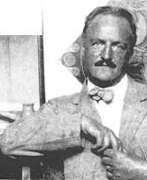



Joris Hendricus Laarman is a contemporary Dutch designer, artist and entrepreneur known for his interdisciplinary approach that combines art, design and technology. He is internationally recognised for his pioneering creations in various fields, including furniture design, architecture and experimental production methods.
Joris Laarman studied at the Eindhoven Academy of Design. During his studies, he co-founded an experimental design collective called Lab, which aimed to challenge traditional design methodologies and explore the possibilities offered by digital production technologies.


Willem Lenssinck, a Dutch-German sculptor and designer born in 1947, has carved a unique niche in the world of art and design. Growing up in Utrecht, the Netherlands, he developed a keen interest in the arts, later attending the Academy of Fine Arts (HKU). After graduating in 1969, he was immediately hired as a designer for industrial ceramics at Royal Delft, marking the beginning of his illustrious career.
Lenssinck's work is a fascinating blend of sculpture and design, characterized by futuristic aesthetics, sharp lines, and highly polished surfaces. His favorite subjects, such as horses, machines, and female figures, often convey a sense of technological advancement and transformation. He has been particularly noted for his sculptures in bronze, German silver, stainless steel, and aluminum, as well as his innovative furniture and lighting designs.
A pioneer in utilizing 3D design techniques, Lenssinck has embraced new technologies to push the boundaries of traditional sculpting. Since 2005, he has been using these processes to overcome limitations in traditional modeling, allowing for more complex and precise creations. This approach is evident in his sculptures, which often feature intricate interplay between organic and mechanical forms.
Lenssinck's work is globally recognized and can be found in prestigious collections, including the British Museum in London and the Museum Beelden aan Zee in Scheveningen. His contributions to art have been acknowledged with several accolades, including the Pieter d’Hont Award in 1991. His presence at prominent art fairs like the PAN Fine Art Fair in Amsterdam and TEFAF in Maastricht has further cemented his status as a distinguished artist.
For collectors and aficionados of contemporary art and design, Willem Lenssinck offers a unique exploration into the fusion of art and technology. Sign up for updates and immerse yourself in the world of a sculptor who defies the conventional, blending creativity with cutting-edge techniques. Stay informed about exhibitions, sales, and events featuring the intriguing works of Willem Lenssinck.
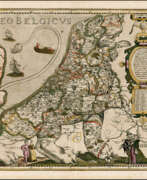

Pieter van der Keere (Latin: Petrus Kaerius) was a Flemish engraver, publisher, cartographer and globe maker.
His father was the master of typefaces Hendrik van der Keere (c. 1540-1580); in 1584 he fled from the Netherlands to London, where he lived most of his life. Pieter van der Keere produced engravings and atlases. From 1603, Kere began to produce large city panoramas, including Utrecht, Cologne, Amsterdam and Paris.
An atlas of the Netherlands was published in 1617, with der Keere's name as publisher and his full signature on several maps. He also produced topographical maps of Amsterdam and Nuremberg, as well as a world map ("Nova totius terrarum orbis..."), which was printed by Jan Janszoon in Amsterdam.
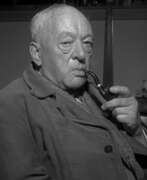

Bart van der Leck was a Dutch painter and designer. He was a member of the De Stijl movement, a group of artists and designers who sought to create a new visual language that reflected the modern era.
Van der Leck began his career as a decorative painter, working on a variety of projects including murals and stained glass windows. He later turned to painting, creating abstract compositions characterized by bold, flat areas of color and simple geometric shapes. His work was influenced by his interest in the visual language of non-Western art, as well as by the work of Dutch painters such as Piet Mondrian and Theo van Doesburg.
In addition to his work as a painter, van der Leck was also a designer, creating textiles, furniture, and ceramics. He believed that art should be integrated into everyday life and worked to create designs that were both functional and aesthetically pleasing.
Van der Leck's work played an important role in the development of the De Stijl movement, and he worked closely with other members of the group, including Mondrian and van Doesburg. His paintings and designs continue to be celebrated for their bold simplicity and their contribution to the development of modern art and design.
